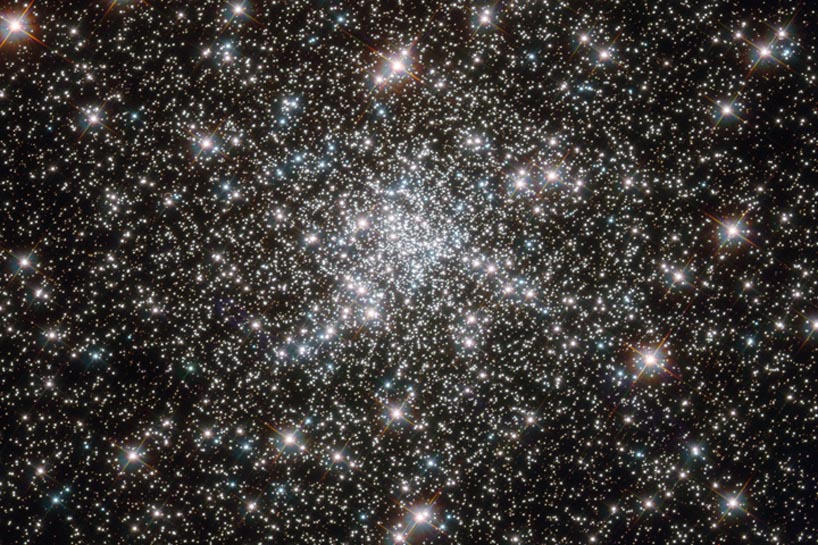
Globular Cluster
RA 19h 10m 52.43s Dec -59° 59' 8.88"
Pavo
13,000 light years
5.4
20.4 arcmin in diameter
2.12 x 1.48 arcminutes
North is 26.4° left of vertical
ESA/Hubble & NASA
January 30, 2012
2013 Image: S1323
ABOUT THIS IMAGE:
Looking like a hoard of gems fit for an emperor’s collection, this deep sky object called NGC 6752 is in fact far more worthy of admiration. It is a globular cluster, and at over 10 billion years old is one the most ancient collections of stars known. It has been blazing for well over twice as long long as our Solar System has existed.
NGC 6752 contains a high number of “blue straggler” stars, some of which are visible in this image. These stars display characteristics of stars younger than their neighbors, despite models suggesting that most of the stars within globular clusters should have formed at approximately the same time. Their origin is therefore something of a mystery.
Studies of NGC 6752 may shed light on this situation. It appears that a very high number — up to 38% — of the stars within its core region are binary systems. Collisions between stars in this turbulent area could produce the blue stragglers that are so prevalent.
Lying 13,000 light-years distant, NGC 6752 is far beyond our reach, yet the clarity of Hubble’s images brings it tantalizingly close.
From Wikipedia:
NGC 6752 (also known as Caldwell 93) is a globular cluster in the constellation Pavo. It is the third-brightest in the sky, after Omega Centauri and 47 Tucanae, and is best seen from June to October in the Northern Hemisphere.
NGC 6752 was first identified by James Dunlop of Parramatta on June 30, 1826, who described it as an irregular bright nebula which could be resolved into a cluster of many stars, highly compressed at the center. This corresponds with a core region densely populated with stars around 1.3 light-years in diameter, which indicates it has undergone core collapse. The cluster lies around 13,000 light-years distant and is one of the closer globular clusters to Earth. It also lies 17,000 light-years away from the galactic center. It belongs to Shapley–Sawyer Concentration Class VI, namely of intermediate density and has been calculated to be 11.78 billion years old. There are a large number of binary stars in the system, as well as blue stragglers, which are likely to have been formed by collisions and mergers of smaller stars. The NASA website "Astronomy Picture of the Day" notes that it holds over 100,000 stars in a sphere about 100 light-years in diameter.
The apparent magnitude of the cluster is 5.4, so it can be seen with the unaided eye. However this depends on good viewing conditions with a minimum of light pollution. With binoculars it can be seen to cover an area three quarters the size of the full moon. It lies 1.5 degrees east of 5th-magnitude Omega Pavonis. The nearest bright star is Peacock, which lies 3.25 degrees north and 9.25 degrees east.
Six X-ray sources have been identified in the cluster's core by the Chandra X-Ray Observatory.